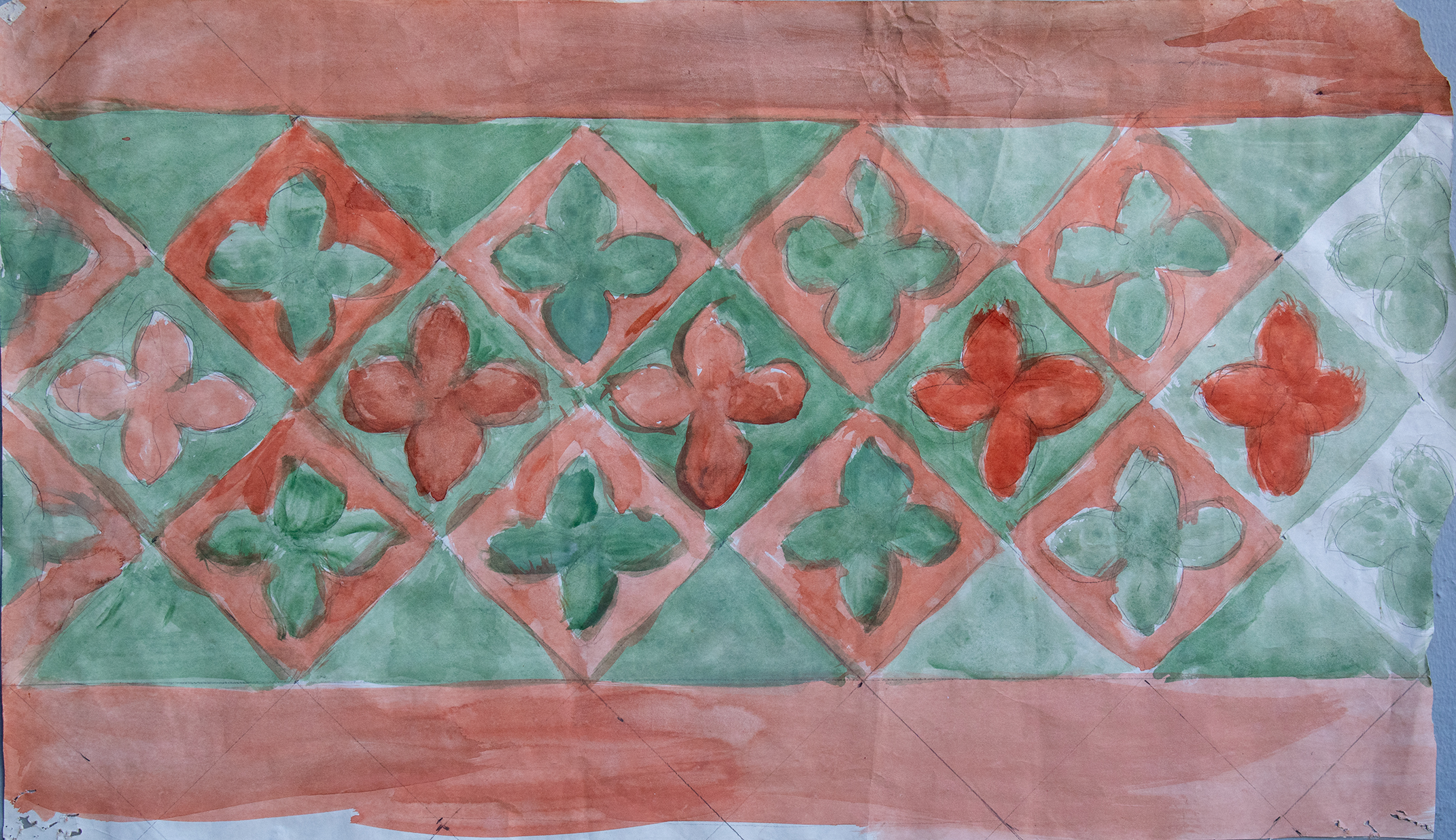
Julian Street Inn – Shelter for the Homeless: Courtyard fountain with hand-painted and hand-glazed tilework
1988Tilework with diagonal squared pattern with four-petal flower in interchanging green and salmon, cladding the base wall of the fountain.
Contents
-
The Julian Street Inn - Shelter for the Homeless: Courtyard fountain with hand-painted and hand-glazed tilework - Sketches
01/01/1988
Sketch of the tile pattern used for cladding the base wall of the fountain. Diagonally arranged square tiles include four-petal flowers placed on two alternating color backgrounds .
-
The Julian Street Inn - Shelter for the Homeless: Courtyard fountain with hand-painted and hand-glazed tilework and Courtyard Fountain with Lion's Head - Sketches
01/01/1988
Two sketches on the same page, one being a schematic perspective view of the courtyard fountain with a lion’s head depicting the water spouting element and a grid of diagonally placed pattern suggesting the tile layout. The second sketch depicts ...
-
The Julian Street Inn - Shelter for Homeless: Hand-glazed tilework for cladding the courtyard fountain - Photographs of mock-up
01/01/1989
Image of test samples of glazed tiles painted and fired for checking on site the color glazes and pattern of the tiles to be used for cladding the fountain curved base in the main courtyard. .
-
The Julian Street Inn - Shelter for Homeless: Hand-glazed tilework for cladding the courtyard fountain - Photographs of mock-up
01/01/1989
Four color prints on non-photographic paper, depicting an early full scale paper mock-up of the tiles to be used for cladding the fountain curved base in the main courtyard. .
-
The Julian Street Inn - Shelter for Homeless: Lion's Head and hand-painted and hand-glazed tilework for cladding the courtyard fountain - Photographs
01/01/1990
Photograph of fountain with the hand-glazed tiles cladding the fountain base, and the cast concrete lion’s head.
SEE ALL Photographs
References
-
Geometry and Fifteen Fundamental Properties
Christopher Alexander recognized the importance of the geometry of centers and for years he was looking for the common structural features among buildings, paintings, streets, carpets, doors, windows, etc. which have "life" and "wholeness". He identified fifteen structural features which ...
-
Ornament and Function as Products of Unfolding
Ornament arises as part of the design process, when a person is making and seeks to embellish this "something" while making it. It arises as a result of the latent centers in the uncompleted thing requiring still more centers, requiring ...
-
Strong Centers in all Levels of Scale
A building can only amount to something as a living thing when the various physical elements which appear in it are profound centers. The dominant feature of the process that is working correctly is that new centers are formed, and ...




 Go Back
Go Back